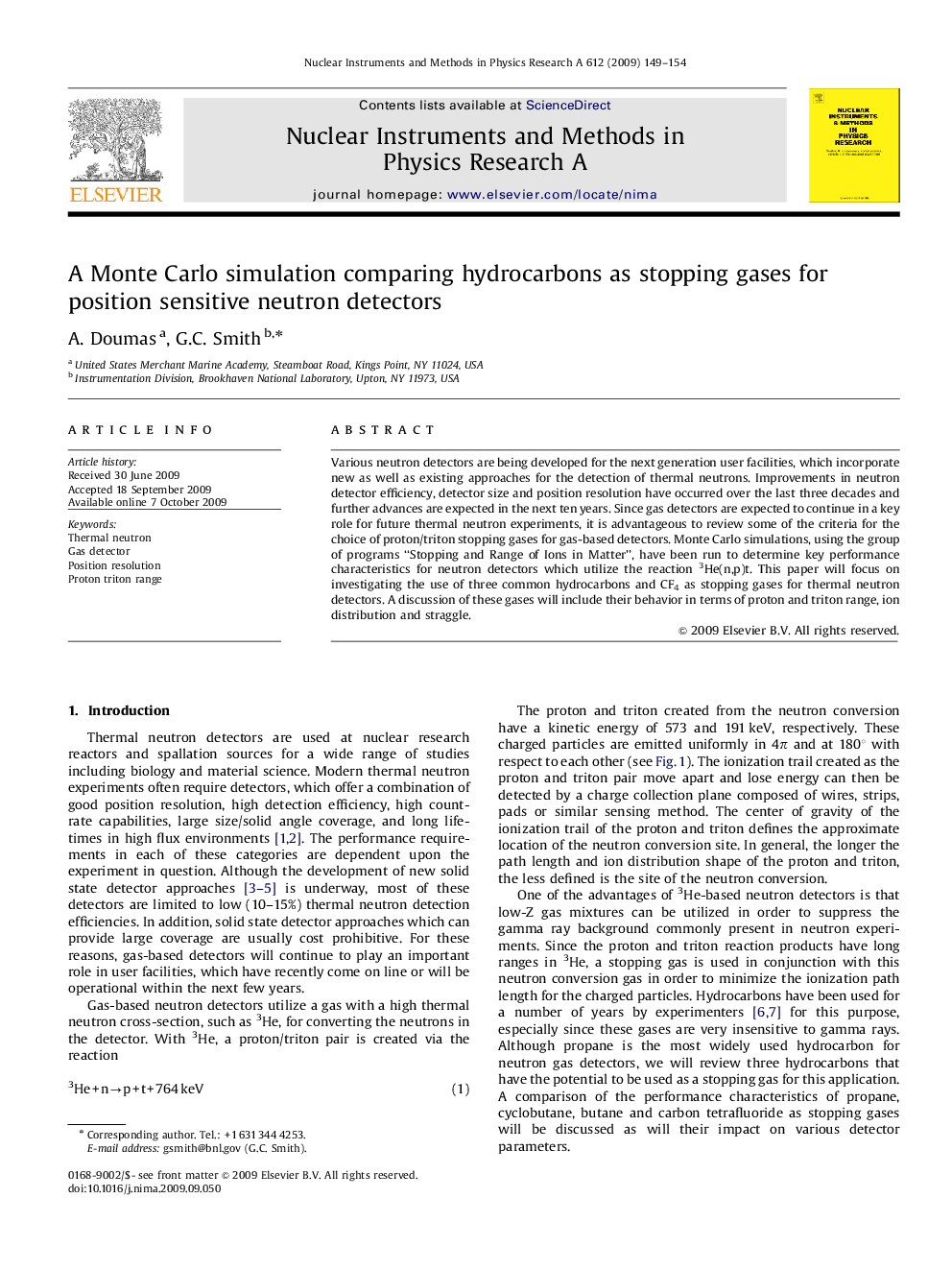| Article ID | Journal | Published Year | Pages | File Type |
|---|---|---|---|---|
| 1826434 | Nuclear Instruments and Methods in Physics Research Section A: Accelerators, Spectrometers, Detectors and Associated Equipment | 2009 | 6 Pages |
Various neutron detectors are being developed for the next generation user facilities, which incorporate new as well as existing approaches for the detection of thermal neutrons. Improvements in neutron detector efficiency, detector size and position resolution have occurred over the last three decades and further advances are expected in the next ten years. Since gas detectors are expected to continue in a key role for future thermal neutron experiments, it is advantageous to review some of the criteria for the choice of proton/triton stopping gases for gas-based detectors. Monte Carlo simulations, using the group of programs “Stopping and Range of Ions in Matter”, have been run to determine key performance characteristics for neutron detectors which utilize the reaction 3He(n,p)t. This paper will focus on investigating the use of three common hydrocarbons and CF4 as stopping gases for thermal neutron detectors. A discussion of these gases will include their behavior in terms of proton and triton range, ion distribution and straggle.
